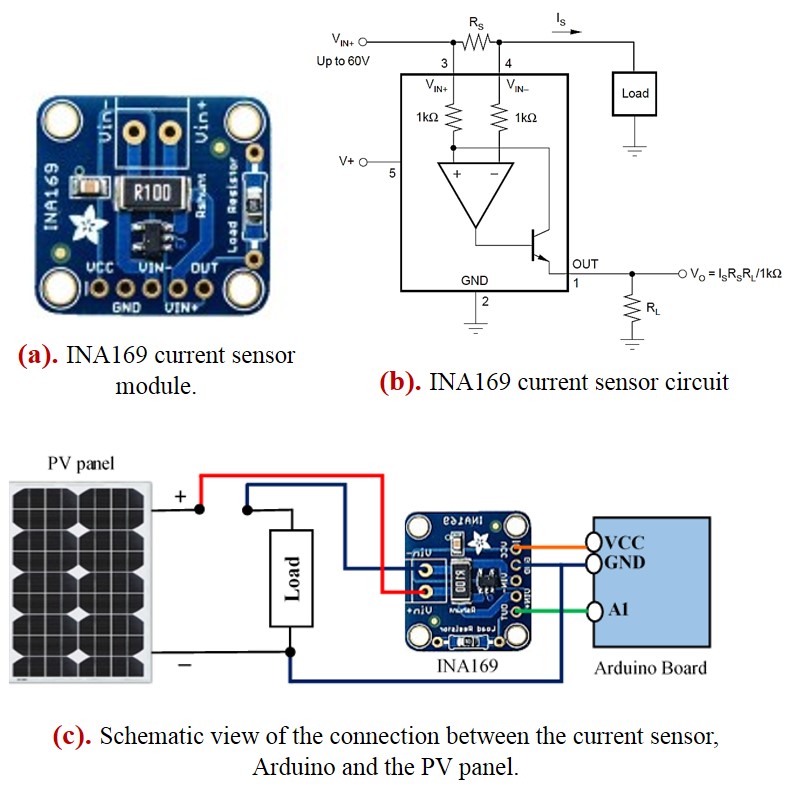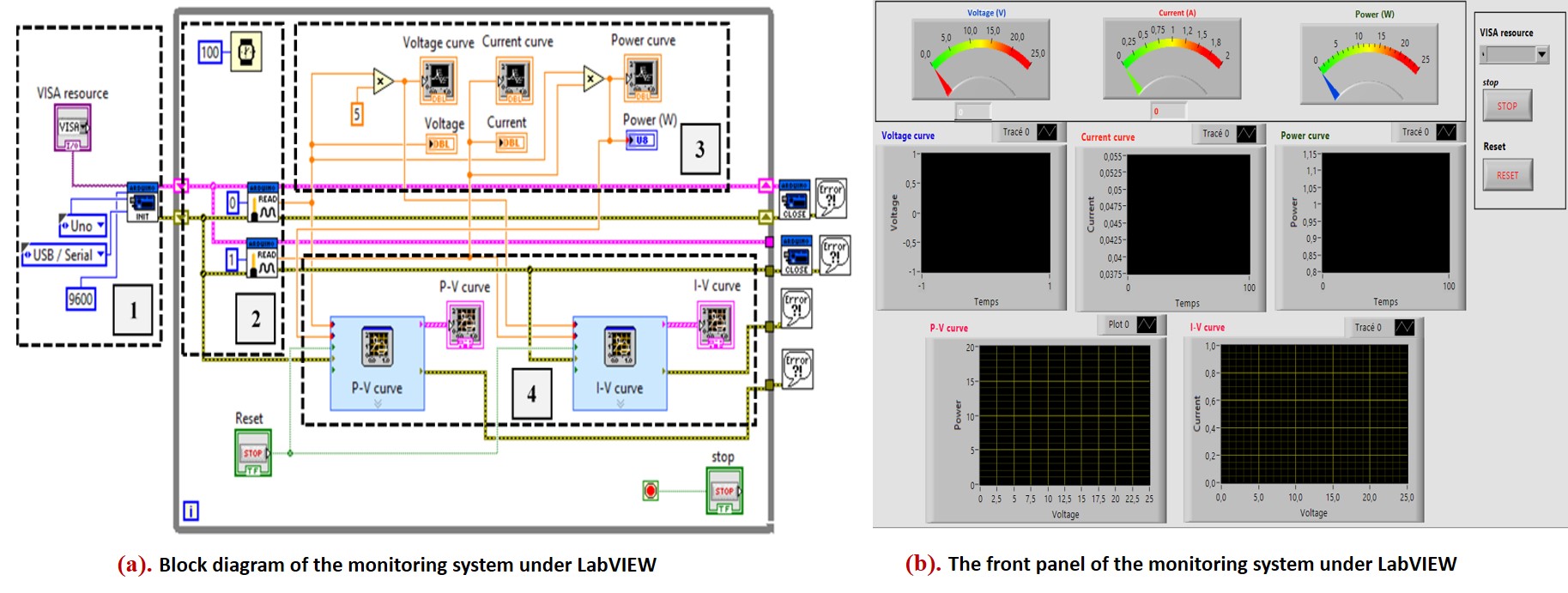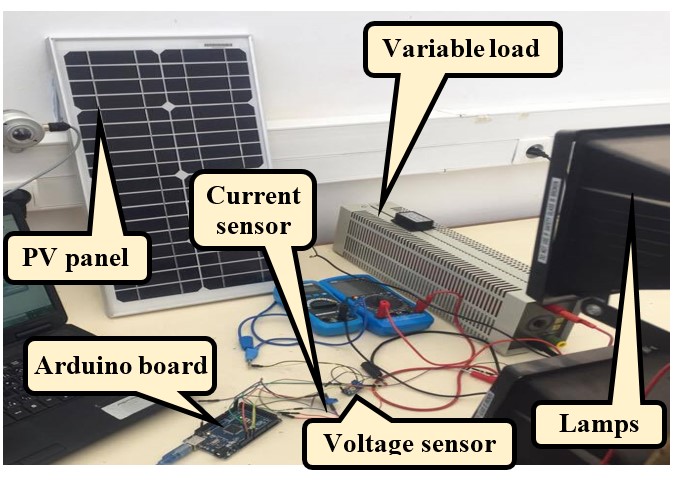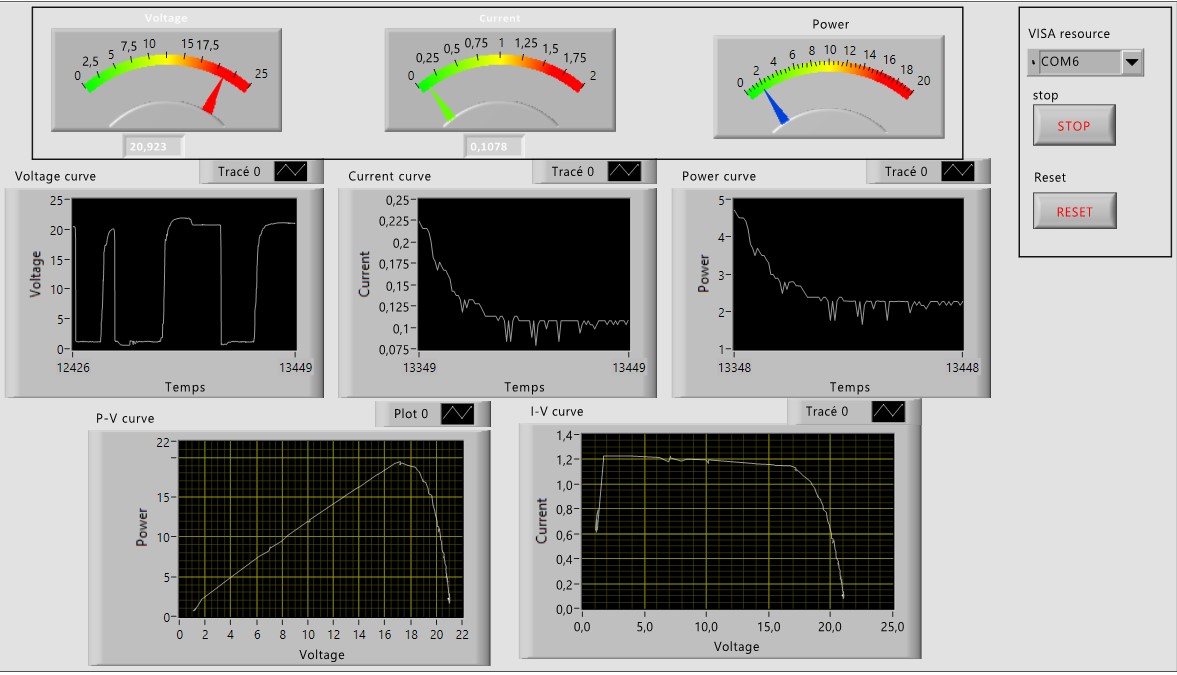This project proposes a low-cost real-time virtual instrumentation system based on LabVIEW and Arduino to characterize a PV panel. Also for monitoring its output data (current, voltage, and power) under real condition. A PV panel, Arduino UNO board, voltage, and current sensors are used as hardware components. Arduino IDE, LabVIEW, and LIFA are used as the software of the system design.
The Figure below shows the schematic diagram of the instrumentation system. The current and voltage sensors sense the output current and voltage from the PV panel. Then, the readings of the two sensors are transmitted to the microcontroller of the Arduino UNO board. While the LabVIEW Interface for Arduino (LIFA) serves as an interface between the Arduino microcontroller and computer to make communication between the microcontroller and LabVIEW through a serial connection. During the acquisition process, the measured data of the current, voltage and power are plotted directly in a monitoring platform developed under LabVIEW.
This project is linked to this research paper.
Explanatory video:





_ztBMuBhMHo.jpg?auto=compress%2Cformat&w=48&h=48&fit=fill&bg=ffffff)









Comments
Please log in or sign up to comment.